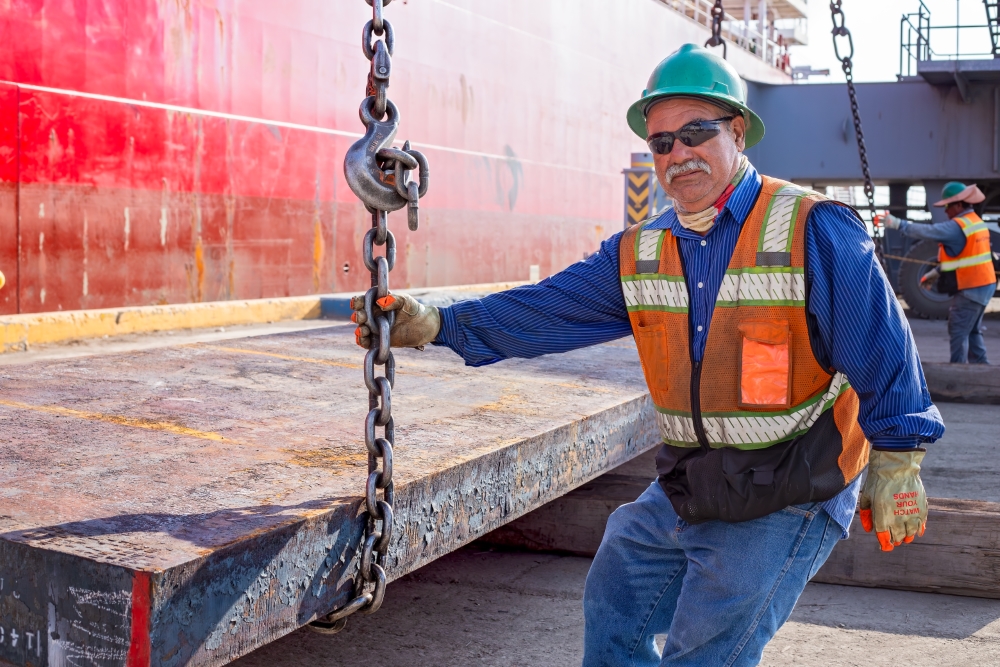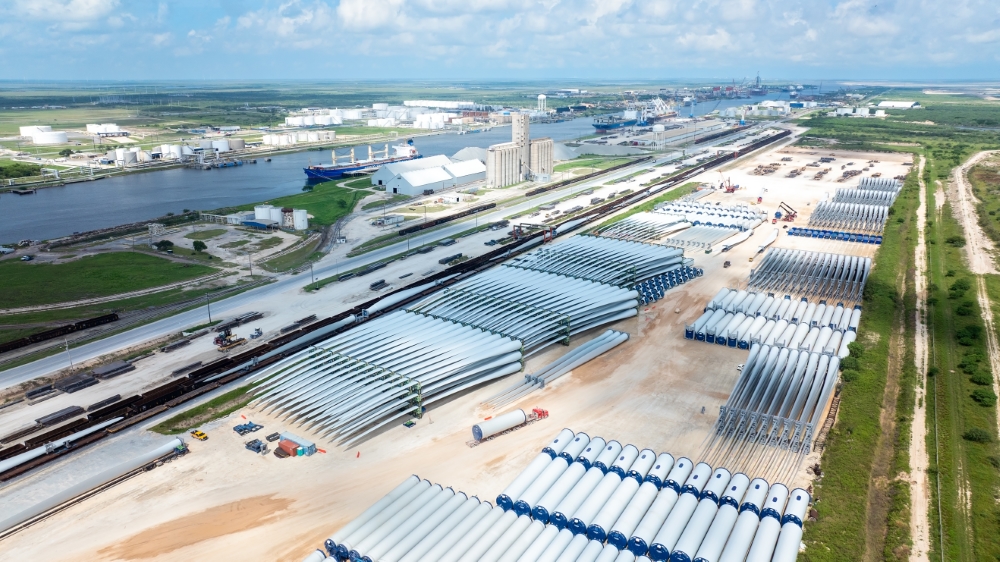Close your eyes and picture 40,000 acres.
Now open them and answer this question: How far away was the horizon?
In Brownsville, Texas, it’s as far as your global vision can take you.
Connected to the Gulf of Mexico by a 17-mile ship channel, the Port of Brownsville is the largest land-owning public port authority in the nation and the only deepwater port on the U.S.-Mexico border. Its 40,000 acres measure out to just over 62 square miles, or a parcel the size of the thriving Dallas suburb of Frisco.
As it happens, 62 is also the official number of the Port’s thriving Foreign-Trade Zone, which routinely ranks among the top three of 193 in the nation in terms of value of exported cargo ($7 billion in 2023) and recently ranked No. 13 overall for the value of imports ($3.2 billion). FTZ No. 62 offers sites at the port and throughout Cameron County including the Brownsville-South Padre Island International Airport, Valley International Airport in Harlingen, Harlingen Industrial Park and Airpark, NAFTA Industrial Park in Brownsville, and FINSA Industrial Park at Los Indios.
Port of Brownsville Director and CEO William Dietrich says people don’t really get the immensity of the place until they get down to the southernmost tip of Texas and see it for themselves. They also see the vast scale of operations at the Rio Grande LNG and Texas LNG liquefaction and terminal complexes; the shipbuilding and offshore platform construction site of Seatrium AmFELS (formerly Keppel AmFELS) that was sold in September 2025 to global giant Karpowership; Mexico’s Forza Steel (making an $85 million, 600-job investment); and so many other activities from the 230 companies doing business at the Port.
Visitors also see the absolute proximity to Mexico, one reason the Port and the Brownsville Navigation District for 90 years has been viewed as a throughput port, with value added in Mexico. Steel company Ternium, for one, continues to churn out massive amounts of product from an expanding complex near Monterrey that transits through the Port. Ternium’s $7.2 billion investment to build a new steelworks and cold-rolling facility at its existing site in Pesquería in Mexico is expected to increase steel and metal throughput at the Port of Brownsville to more than 9 million tons annually from 6 million tons in 2024.
The throughput business is a mainstay for the region. At the same time, “We are trying to change that a bit with the nearshoring phenomenon,” says Dietrich. The goal is to have a diversified portfolio of businesses. It’s fair to say that diversification is already afoot, with space industry and wind energy components found on port grounds alongside major breakbulk, petroleum, chemical and materials products, not to mention a shrimping fleet.
Infrastructure Includes Talent
Helping all of those sectors flow freely is the $600 million Brazos Island Harbor Channel Improvement Project, which will deepen the ship channel from 42 feet to 52 feet. NextDecade ponied up $400 million for Phase 1, which includes deepening the channel near its Rio Grande LNG site and building two ship berths and a turning basin. Dietrich says the project is going very well thanks to the public-private partnership, with the Port investing around $71 million and the U.S. Army Corps of Engineers contributing $68 million derived from the federal Infrastructure Investment and Jobs Act. “So the lion’s share is being taken care of financially primarily by the private sector,” he says.
Helping to land more companies is a new 118-acre business park “a rock’s throw from the channel,” Dietrich says. “These sites are already set up for somebody to come in and lease and use the maritime component here” and ideal for cross-border manufacturing. The park features three Class I railroads (part of 45 miles of rail service on port property), 24/7 secured facilities and direct entry to the port’s overweight corridor — the Port issues permits online to shippers allowing them to load trucks to the legal weight limits of Mexico.
In April 2024, Westa Inc. officially became the park’s first tenant and is moving forward with a $20 million wheat flour mill and sunflower processing plant with storage silos on a 10-acre site at the port’s turning basin that will receive raw materials by barge from the Midwest. The company is expected to create 120 new jobs. Those positions will join thousands of others in the Navigation District, including the 4,000 at work on NextDecade’s $20 billion Rio Grande LNG project alone. Which points to a key differentiator for the region in addition to its logistical advantages: talent. One of the provisions of the Rio Grande project was that 30% of the workforce had to be local.

Experience and expertise speak volumes at the Port of Brownsville.
“Right now we’re at 72% local,” Dietrich says, “so our workforce has exceeded expectations. It’s something we’ve always known in the Rio Grande Valley. It’s a unique place in Texas and in the country,” with workers not only from places like McAllen and Harlingen but also the 750,000 folks in Matamoros and 1 million in Reynosa across the border.
“For us, crossing the border doesn’t feel like going to another country,” Dietrich explains. “A lot of American citizens have houses over there. I’ve lived here 30 years. These are some of the safest communities in the United States. The cross-border interaction between both sides is a cultural dynamic that is only recognizable when you live here and someone explains it to you. The wall serves as a physical barrier, but we come back and forth every day — families, students, workers, sister cities.”
That sort of fluidity applies to the industrial context too. i.e. advanced manufacturing has been happening in Reynosa and Matamoros for years, Dietrich says. “The maquila industry is very strong and a lot of that experience and expertise is here.” Executives at employers such as NextDecade and Bechtel are “overwhelmingly happy” with that workforce, he says, with the talent and training inspiring Bechtel to refer to the Rio Grande LNG complex as “the best project they’ve ever had.”

A focus on talent will keep those compliments flowing. Now rising at the port is the $30 million South Texas Workforce Development Project from the Texas A&M Engineering Extension Service, which addresses the need for a skilled manufacturing workforce training. The Port itself funds around $200,000 in scholarships. Moreover, Dietrich says, “we are very well connected with our workforce development entities,” including the University of Texas Rio Grande Valley with campuses in Edinburg and Brownsville, Workforce Solutions Cameron and others. “I like to say it’s a ‘can do’ operation,” Dietrich says. “When we all get together in that room, we come up with a solution very quickly.”
Which gives site searchers confidence to find strategic solutions for their own operations in the Rio Grande Valley, where facilities can very quickly rise.
This Investment Profile was prepared under the auspices of the Port of Brownsville and Brownsville Navigation District. For more information, visit portofbrownsville.com.

